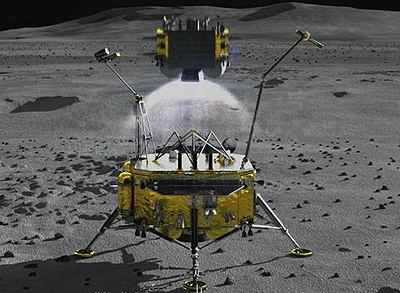
Breaking News
 Avengers: Doomsday | Only in Theaters December 18, 2026
Avengers: Doomsday | Only in Theaters December 18, 2026
 Here Are 5 Wars Trump Started or Expanded in 2025
Here Are 5 Wars Trump Started or Expanded in 2025
 Everyone's a Lender Now: Shadow Banking USA
Everyone's a Lender Now: Shadow Banking USA
 General Flynn Will Issue An Emergency Message To President Trump And The American People...
General Flynn Will Issue An Emergency Message To President Trump And The American People...
Top Tech News
 Laser weapons go mobile on US Army small vehicles
Laser weapons go mobile on US Army small vehicles
 EngineAI T800: Born to Disrupt! #EngineAI #robotics #newtechnology #newproduct
EngineAI T800: Born to Disrupt! #EngineAI #robotics #newtechnology #newproduct
 This Silicon Anode Breakthrough Could Mark A Turning Point For EV Batteries [Update]
This Silicon Anode Breakthrough Could Mark A Turning Point For EV Batteries [Update]
 Travel gadget promises to dry and iron your clothes – totally hands-free
Travel gadget promises to dry and iron your clothes – totally hands-free
 Perfect Aircrete, Kitchen Ingredients.
Perfect Aircrete, Kitchen Ingredients.
 Futuristic pixel-raising display lets you feel what's onscreen
Futuristic pixel-raising display lets you feel what's onscreen
 Cutting-Edge Facility Generates Pure Water and Hydrogen Fuel from Seawater for Mere Pennies
Cutting-Edge Facility Generates Pure Water and Hydrogen Fuel from Seawater for Mere Pennies
 This tiny dev board is packed with features for ambitious makers
This tiny dev board is packed with features for ambitious makers
 Scientists Discover Gel to Regrow Tooth Enamel
Scientists Discover Gel to Regrow Tooth Enamel
 Vitamin C and Dandelion Root Killing Cancer Cells -- as Former CDC Director Calls for COVID-19...
Vitamin C and Dandelion Root Killing Cancer Cells -- as Former CDC Director Calls for COVID-19...
China's Chang'E-5 lander finds first onsite evidence of water on the Moon

The fifth lunar mission launched by China and its third lander mission, Chang'E-5 made history on December 17, 2020 when it's ascent stage and the mission's orbiter returned the first lunar samples to Earth since the Soviet Union's Luna 24 mission in 1976.
Though the mission was a success, the lander lacked a radio-thermonuclear unit to keep it warm through the -310 °F (-190 °C) 14-day lunar night during which its electronics froze and failed. However, the information gathered by the mission during the brief surface mission is still returning surprising dividends.
One of these involves something that is more valuable than gold when it comes to future lunar missions and the establishment of permanent human outposts: water. If a large supply of the wet stuff can be secured on the Moon, it will provide future missions with not only a source of drinking water, but also oxygen and hydrogen that can be used to produce air for breathing, rocket fuel, and the raw material for a staggering array of industrial processes.
So far, all of the water detected on the Moon has been from orbiting spacecraft using remote sensing to uncover water ice hiding in the permanent shadows of the lunar south polar region, but the new study that included scientists from the National Space Science Center of CAS, the University of Hawai′i at M?noa, the Shanghai Institute of Technical Physics of CAS, and Nanjing University has found the presence of water in the form of H?O or OH hydroxyl molecules in the Northern Oceanus Procellarum basin much closer to the lunar equator.
The area where Chang'E-5 touched down is a lava plain that is made of some of the youngest mare basalts on the Moon. Using the lunar mineralogical spectrometer (LMS) onboard the lander, mission control carried out spectral analysis of light reflecting off the regolith on the surface and a rock in the vicinity of the lander.



